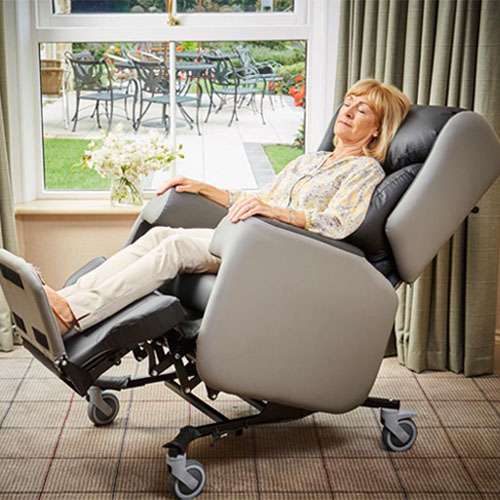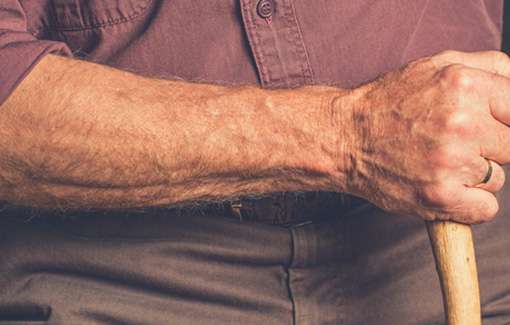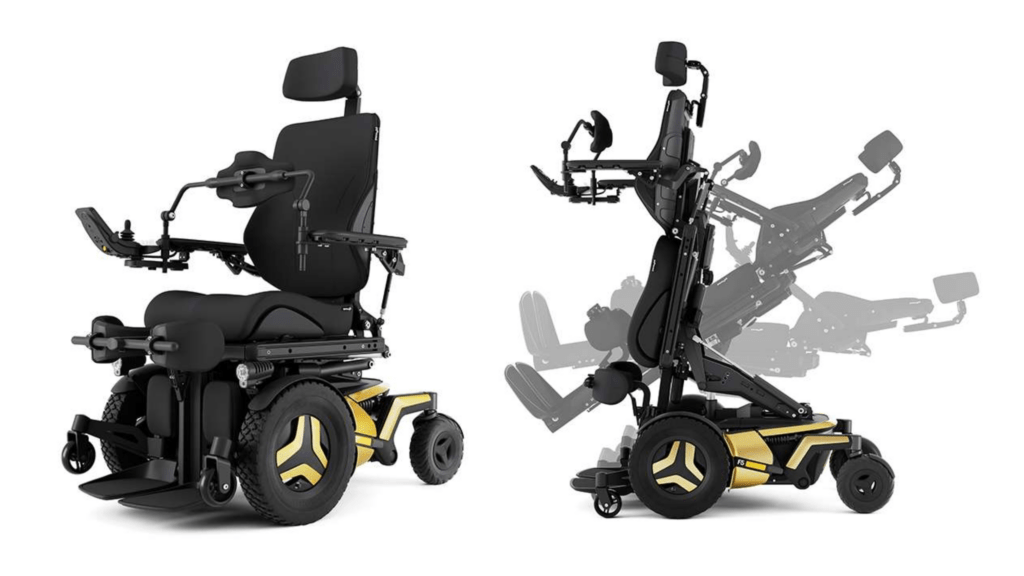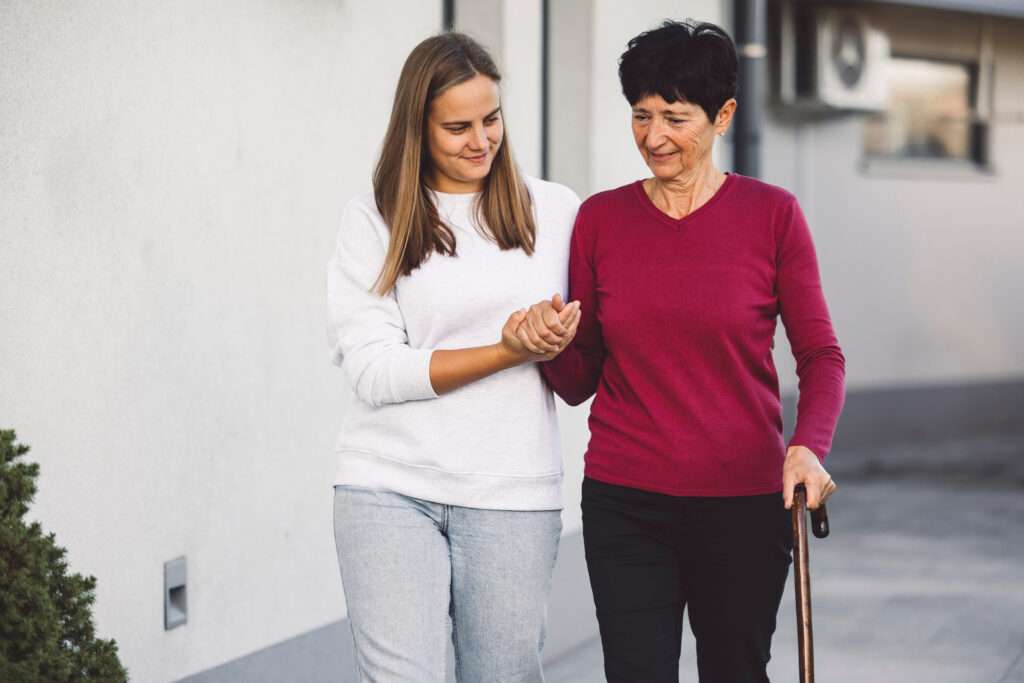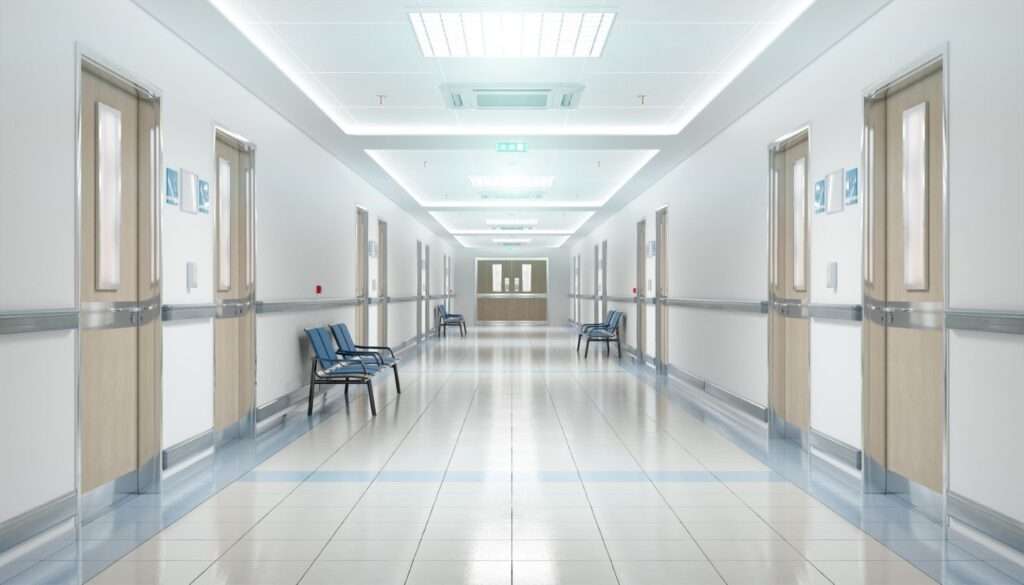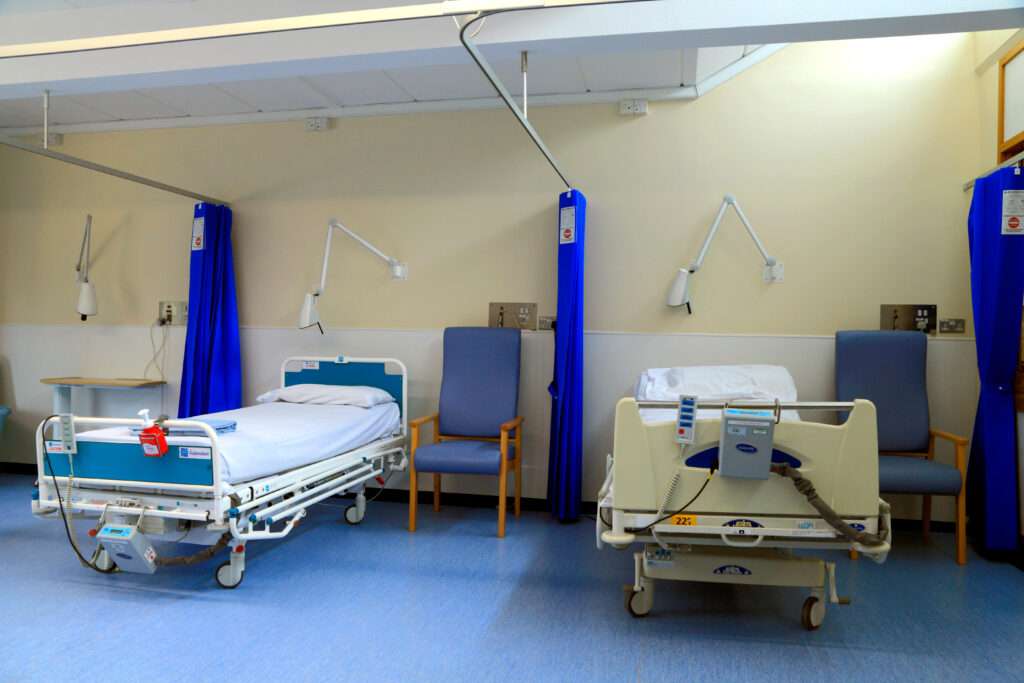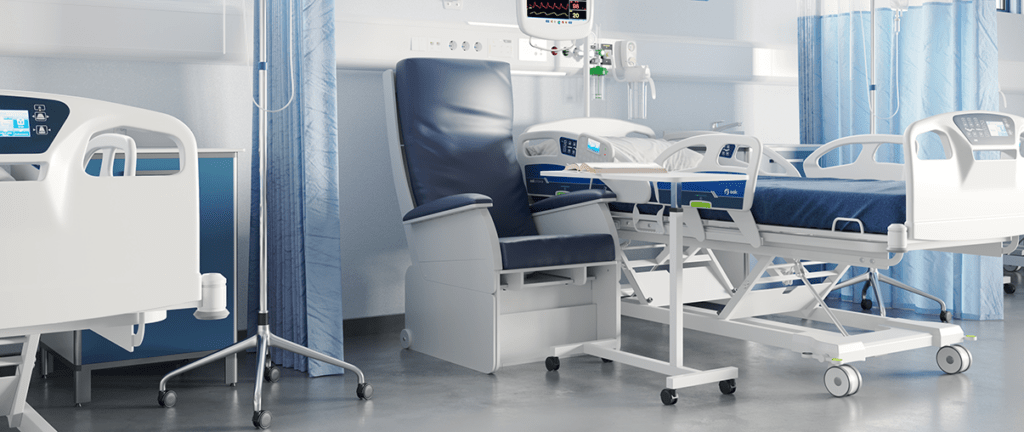Pressure ulcer management rightly places heavy focus on the increased vulnerability developing pressure ulcers when laid down. Specifically, when lying on areas of the body that are affected by prolonged pressure from hard surfaces.
While important, it is also necessary to highlight how pressure ulcers can form simply from a sitting position, and how important it is to get the correct care chairs to suit a patient’s needs.
Recliner chairs designed for pressure care and management
Pressure relieving recliners
Our Lento Care Chair is designed with multiple levels of pressure relief cushions and is adjustable to 80% of the population. Contact us for more information, or read on to find out exactly how this chair can help with pressure injury management.
Jump straight to…
What are Pressure Ulcers?
Let’s start off with explaining what pressure ulcers are. Sometimes called bed sores, pressure ulcers are caused by prolonged periods of pressure on an area of the body.
Pressure injuries are particularly common amongst individuals with limited mobility because they may not be able to alter their position throughout the day. The pressure makes it more difficult for blood to flow through the area, and over time this starves the skin of oxygen and nutrients usually provided by blood cells.
The skin begins to die and if left untreated, a pressure ulcer can form.
When seated, there are a few areas of the body that may be at risk of pressure ulcers. Your bottom, tailbone, the backs of your legs, or even your elbows can be vulnerable if the seat you are sitting in doesn’t give you the correct support.
With that in mind, let’s look at what a care chair should have in order to support people with pressure injuries.
Chair Size & Pressure Ulcers
The sizing of the chair is critical. The size of our chairs actually helps to determine our posture.
For instance, if a chair is too short and shallow, our knees are elevated and thus more pressure goes to our bottoms and tailbones. Conversely, if the chair is too tall, there is significantly more pressure going on the backs of the legs as gravity pulls down our legs that may be dangling over the edge.
Similarly, if a chair is too deep we tend to slouch our backs so that our bottoms aren’t right in the corner of the seat. This places additional pressure on the tailbone, buttocks, and even the back of the head.
Chair Depth & Pressure Ulcers
Many occupational therapists consider seat depth to be the more important measurement when choosing a chair. This is especially true for someone with pressure ulcers.
The ideal chair should have the user’s knee to hip angle at around 90°. This means that the upper legs should be perpendicular to the body, thus allowing the individual’s weight to be firmly supported through their bottom and their feet that are placed flat on the floor. When sitting right back against the lumbar support, the entire upper leg should be supported right to the back of the knee without the cushion placing any pressure or stress on the back of the calf.
Armrest height should also be considered to avoid the possibility of any pressure ulcers on the elbows. The armrest should sit at a natural level with the user’s elbows, which will guide them into a neutral position.
The Lento Care Chair is highly adjustable. You can change each of the following seat measurement in seconds, without needing any tools:
- Arm height
- Seat width
- Seat depth
- Leg length
- Back height
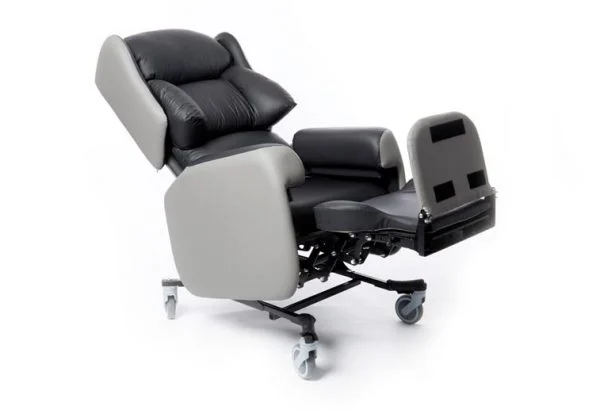
The Lento can be resized to fit 80% of the population!
Tilt-in-Space
Another factor of care chairs for individuals with pressure ulcers is the tilt-in-space function. Lots of care chairs offer this as a means of relieving the usual hotspots by redistributing pressure over larger surfaces.
Tilt-in-space tilts the chair but keeps the back and legs at the same angle. This means that the 90° angle is maintained, and the pressure that usually goes through the bottom is redistributed across the back.
This makes pressure ulcers less likely as the pressure is reduced over a bigger space. Tilt-in-space also stops individuals from sliding down the chair, which reduces shearing and skin damage.
The feature also supports the head, taking the strain off the neck and shoulders.
Pressure Relief
Of course, one of the most straightforward features that care chairs can include is built-in pressure relief. Using specific materials and foams, chairs can help to relieve pressure on certain areas.
Memory foam pressure relief cushions
Memory foam is one of the more popular options, moulding to the user’s body shape to spread the pressure and relieve problem areas. Foam cushions typically provide pressure relief for people with a medium-risk of developing pressure ulcers.
Gel pressure relief cushions
There are other options like Intelli-Gel, which is a gel that has been designed to redistribute pressure with ease and support the weight of the body.
It’s made up of a grid-like structure of gel columns that buckle under high pressures and give a very low ‘spring back’ force — this spreads the pressure across the gel rather than keeping it concentrated to just one area. Intelli-Gel also has incredible air circulation, minimising the risk of moisture that can be detrimental to pressure ulcer care.
Air pressure relief
High-risk individuals may be more suited to static air pressure relief that can contour more freely to the user’s body shape. Models like the Cura Air Chair offer this feature, which helps to alleviate pressure build-ups by moulding to the user’s shape.
Very high-risk individuals are more likely to benefit from alternating air cushioning. This works by having a pump attached to the chair which inflates and deflates alternative parts of the cushion on a time schedule. By regularly changing the pressure, this means that the pressure is moved around thus taking away the issue of peak pressures.
The Lento is available with an alternating air cushion for individuals with existing pressure ulcers, or at extremely high risk.
One downside of alternating air pressure relief is the cushions are not very comfortable.
An added benefit of the Lento, is the pressure relief cushion can quickly be swapped without any tools. So, if an individual’s pressure ulcers start to improve and their risk level drops, you can replace the cushion with a gel/foam version to make them more comfortable.
Regulated Motion
Although there is plenty to offer when it comes to relieving pressure ulcers in care chairs, there are still times when it simply isn’t enough. Individuals should always be assessed as to how long they can sit in a chair, and indeed if they need to be predominantly in bed.
Especially with high-risk patients, beds give more positioning support simply because the user is laid down — chairs can be more challenging because you need to control your own posture. Rather than having users in bed all day, it may be worth looking at care chairs with Regulated Motion.
These chairs slowly move back and forth when tilted to ensure that the user has next to no pressure build-ups. This means that individual could sit in the chair for a long time, or even sleep in it, and the carer doesn’t need to be worried about incurring pressure ulcers.
It also relieves carers of having to reposition the user every 20 to 30 minutes.
Summary
Pressure ulcer prevention is important to ensuring that the individual’s quality of life is maintained and protected.
There are lots of ways that chairs can help to relieve and prevent pressure ulcers from taking hold, and it all starts with making sure that the chair suits the user’s body shape and needs.
Let us know if you need a hand with being measured or if you simply want some more advice on care chairs!
Alternatively, you can download this seating eBook for free – it’s full of helpful hints and tips on everything to do with seating!





